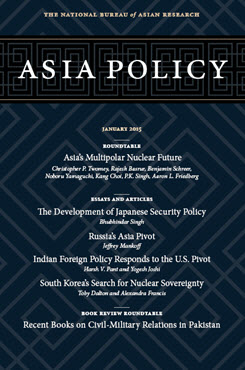The Evolving Nuclear Order
Implications for Proliferation, Arms Racing, and Stability
This is one of seven essays in the roundtable “Approaching Critical Mass: Asia’s Multipolar Nuclear Future.”
Aaron L. Friedberg is Professor of Politics and International Affairs at Princeton University.
This is one of seven essays in the roundtable Approaching Critical Mass: Asia’s Multipolar Nuclear Future.
The 25 years since the end of the Cold War have seen several notable shifts in the global distribution of nuclear capabilities:
- The Soviet Union (now Russia) and the United States have slashed their arsenals by roughly 75% from 20,000–30,000 warheads to 7,000–8,000. [1]
- France and Britain have also made substantial cuts, reducing their nuclear forces from 500 weapons at their peak to roughly 300 and 200, respectively.
- Of the Cold War “big five” (the United States, Britain, France, Soviet Union, and China), only China has not reduced its stockpile, which is estimated at 250 warheads. Beijing has also made significant investments in modernizing its forces, developing new mobile intercontinental ballistic missiles as well as submarine-launched ballistic missiles.
- Three new countries (India, Pakistan, and North Korea) have joined the list of acknowledged nuclear weapons states, and one (South Africa) has been removed.
- Finally, in recent years a series of aspirants (Iraq, Libya, and Syria) have seen their nuclear ambitions foiled, while one (Iran) continues to press on toward the finish line.
What are the implications of these developments for the conduct of international relations, and, in particular, how are they likely to shape events in eastern Eurasia, a zone of strategic interaction that extends from the Korean Peninsula, down through the South Asian subcontinent, and into the Persian Gulf region? The essays in this roundtable have helped shed light on three aspects of this question: proliferation, arms racing, and stability.
Endnotes
[1] All figures are from Robert S. Norris and Hans M. Kristensen, “Global Nuclear Inventories, 1945—2010,” Bulletin of the Atomic Scientists (July/August 2010): 77–83.
About Asia Policy
Asia Policy is a peer-reviewed scholarly journal presenting policy-relevant academic research on the Asia-Pacific that draws clear and concise conclusions useful to today’s policymakers. Asia Policy is published quarterly in January, April, July, and October and accepts submissions on a rolling basis. Learn more


